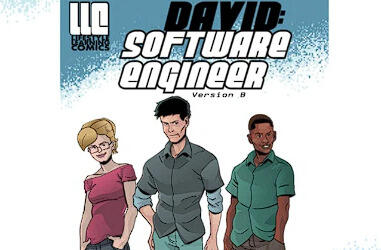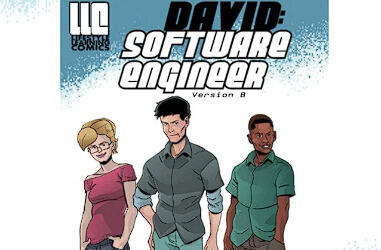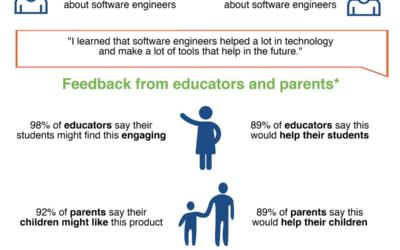Lifestyle Learning
Too many of our students are not graduating from public schools equipped and prepared to continue on to higher education STEM programs or to enter the STEM workforce. Only 16 percent of American high school seniors are proficient in mathematics and interested in a STEM career (US Department of Education, Science, Technology, Engineering and Math: Education for Global Leadership http://www.ed.gov/stem).
STEM is an acronym for Science, Technology, Engineering and Math, an interdisciplinary approach to education. Because STEM is integral to 21st Century careers, it is often coupled with hands-on, problem-based learning, an instructional methodology by which students learn most effectively to apply what they learn (Mergendoller, Maxwell, & Bellisimo, 2006). Recently, both the Common Core State Standards for Mathematics (CCSSM) and the Next Generation Science Standards (NGSS) have called for more and deeper connections among the STEM subjects.
Through application of STEM, The United States has become a global leader, in large part, through the genius and hard work of its scientists, engineers and innovators. Yet today, that position is threatened as comparatively few American students pursue expertise in the fields of science, technology, engineering and mathematics (STEM). The U.S. Department of Education has set a priority of increasing the number of students who are proficient in these vital STEM fields. Over $170 million in Federal grants supporting SPED in education were awarded during the 2014-2015 school year to identify and implement effective approaches for promoting student engagement, interest, and achievement in the STEM fields.
Currently, there are more job openings in STEM fields than qualified STEM job seekers. The number of STEM jobs are estimated to grow by 17 percent over the next decade, nearly twice the rate of non-STEM jobs (U.S. Department of Commerce Economics and Statistics Administration). Two-thirds of STEM workers have at least a college degree, compared to less than one-third of non-STEM workers. Additionally, degree holders enjoy higher earnings, regardless of whether they work in STEM or non-STEM occupations. Yet, many of our students are not graduating from public schools equipped and prepared to continue on to higher education STEM programs or to enter the STEM workforce.
The Challenge
Why aren’t students excited about STEM subjects and motivated by STEM’s relation to their career aspirations? Getting students excited about STEM subjects is one of the biggest challenges facing educators. A study by Taylor, et al (2004) found that more than 90% of parents had little or very little influence on their children’s career decisions. The study also found that regarding influence on students’ career-development related motivation, teachers and counselors didn’t fare much better than parents.
Research by Bennett (2003) and others, tend to show that students with higher levels of intrinsic motivation will be more likely to invest more time and commitment than students with lower levels, and these high achieving students will also presumably seek assistance if they are having difficulty which will further heighten their standard of academic achievement. So the question remains: how can students become excited by and motivated to pursue STEM courses?
Today’s post-millennial generation of children born in the mid or late 1990s to the present day, often referred to as Generation Z, are multi-media learners. They have grown up with YouTube, Facebook, Xbox Live, Google, and Twitter. Their brains have evolved to process more information at faster speeds. They think spatially and are comfortable with hi-def, surround-sound, 3d, and 360 degree photography. Consequently, kids today are learning, communicating and sharing information via pictures and music. As a result of all this, getting and keeping their attention presents a challenge. Yet we tend to ignore what triggers their motivation. When we try to teach them STEM courses and expect them to work harder, we talk at them and hand them a thick textbook full of words with very little imagery.
The Power of Comics
Recently, comic books and graphic novels have been found to be especially attractive to Generation Z children. Many studies have found that these students read more and achieve more when these publications that consists of art in the form of sequential juxtaposed panels are provided as an option for them (Brenner, 2006; Schneider, 2007; Smith, 2008; McTaggart, 2005; Norton, 2003; Lyga, 2006).
Comics often attract reluctant readers due to their combination of less text, narrative support from images, and a feeling of reading outside the expected canon, which relieves the tensions of reading expectations for most kids (Brenner, 2006). In addition, many students find reading plain text to be mentally and physically exhausting due to the fact that they cannot read at the speed that they think, while graphics provide them with an ability to read through a story faster while still gaining the same information (Tabachnick, 2007).
Norton (2003) found that students are more motivated by what they read when they are allowed to read graphic novels. This study used Archie comics, and students said that the connections they were able to make to characters and social relationships made them more interested in what they were reading. Another study (Hosier, et al, 2011) suggests that “with regard to student learning, comic book stories lose nothing to traditional textbooks while having the added potential benefit of improving attitudes …”
Lifestyle Learning® Comics
According to Kosslyn (2005), visual processing is one of the fastest and most engaging ways to learn (60,000 x faster than plain text alone). In its efforts to stimulate interest in STEM, and expose STEM careers to middle/high school students, Lifestyle Learning® Comics makes effective use of visual processing through the power of Comic Books.
Comic Books are especially effective when they address topics in ways that are relevant to young people. “David, Software Engineer“, is such a Comic Book. This Comic Book is produced specifically to address the organization’s focus of informing and inspiring students about the value of STEM. The story is about a middle school kid named David and his journey to become a software engineer. Two sidekicks, Carlie and Lee, are supporting characters that add humor and camaraderie along the journey. This cast of characters and their story are based on a format found in highly successful examples such as The Legion of Super-Heroes, a comic book series about a team of teen-age super-heroes http://www.comicvine.com/legion-of-super-heroes/4060-19241/ .
The Legion format interests students because it epitomizes how Generation Z sees itself. According to the Legion’s constitution, no member can be over the 18 years of age, must have at least one super-power that he or she can “fully control” and must be “courageous and of good character”.
To test out student reaction to “David, Software Engineer“, Lifestyle Learning®, in cooperation with the University of Oklahoma Health Sciences Center – Diversity & Community Partnerships, the Oklahoma After School Network, and Moon Elementary School, conducted a 2014 Summer Research Parameters survey involving students in three settings (N=59):
- A Future Health Scientists Partnership program) for underrepresented groups (7/3/14),
- A summer afterschool program for underrepresented groups (7/14/14), and
- A summer health science program (7/17/14)
When asked what they learned from the comic, responses by students included the following:
“I learned about different job careers available for you to pursue.”
“Never give up and it is never too late to think about what you want to be.”
“That it takes a lot of work to get that job that pays you that much.”
“The career-related and school-related information at the back of the book was useful.”
Overall, 52% of those surveyed knew more about being a software engineer as a result of reading the Lifestyle Learning comic.
The Lifestyle Learning® Comics Curriculum Guides
The Teacher’s Curriculum Guide that accompanies “David, Software Engineer” is a high-impact tool aimed at guiding students in understanding how the educational choices they make, the career they want, and the lifestyle they want to lead are all interrelated. Through use of the comprehensive and detailed guide, students narrow their focus on future career options and create an individualized plan to help ensure they select courses that will help them achieve their professional goals.
The Lifestyle Learning® Comics Curriculum Guides are accessible on desktop computers, laptops, print version and mobile devices. Additionally, in contrast to traditional career education curricula that involves researching job descriptions and matching personal interests with possible career choices, the Lifestyle Learning® Comics Curriculum Guides are pedagogically sound in that they address the Common Core Standards for Best Practices (http://www.corestandards.org/the-standards and
http://www.careertech.org/career-technical-education/cctc/info.html) and is scaffolded at levels of complexity that are developmentally appropriate for students to build knowledge both within courses and over the sequence of courses.
Consistent with the skill, ability, and knowledge mapping that is provided to guide middle/high school STEM classes, the Teacher Curriculum Guide provides the teacher with
- seven units that connect with specific pages in the comic,
- five post-reading and two extension activities, and
- an appendix of materials and supplementary resources.
The seven units sequentially examine the journey of attaining a STEM-related career. They include discussion questions help students
- consider the extent of their understanding of the scope of a STEM career;
- start preparing and planning for a career that suits their aspirations;
- identify their support network;
- consider how their talents and interests can be the foundation for a future career, need to participate in class, study, and seek opportunities for further career exploration, learning, and networking;
- make the most out of college;
- identify and get the job they want; and
- understand the variety of critical knowledge, skills, and abilities of a STEM career one should possess and practice to be successful.
Post-reading activities include vocabulary and spelling tests and activities, a skills inventory, a family & friends feedback graphic organizer, a career research task sheet to share with the class, and an individual career action plan worksheet.
Extension Activities have students interview someone in the field of computer technology and conduct a Socratic Seminar on how choices in middle school or high school can affect the future.
The Appendix provides resources that include
- Skills Inventory
- Family and Friends Feedback
- Career Research: Software Engineer
- My Career Action Plan
Summary
In spite of the fact that there are more job openings in STEM fields than qualified STEM job seekers, many students are not graduating from public schools equipped and prepared to continue on to higher education STEM programs or to enter the STEM workforce. US Department of Education data indicate that only 16 percent of American high school seniors are proficient in mathematics and interested in a STEM career.
Efforts by parents, teachers, and counselors to get students excited about STEM subjects have had less than hoped for results. Typically, efforts to motivate or teach children regarding STEM courses, focus on lectures and textbooks. Children born in the mid or late 1990s to the present day, often referred to as Generation Z, are multi-media learners. Their brains have evolved to process more information at faster speeds. Consequently, they take in and process information more effectively via imagery such as comic books and graphic novels that consists of art in the form of sequential juxtaposed panels.
Comics often attract reluctant readers due to their combination of less text, narrative support from images, and a feeling of reading outside the expected canon, which relieves the tensions of reading expectations for most kids (Brenner, 2006). In addition, students are more motivated by when they are allowed to read graphic novels as opposed to text alone.
Certain comic books are especially effective because they address topics relevant to young people. “David, Software Engineer“, was created and field tested specifically by LIFESTYLE LEARNING® COMICS to focus on informing and inspiring students about the value of STEM. In addition to student and parent guides, Lifestyle Learning Comics is supported by a comprehensive Teacher’s Guide that addresses the Common Core Standards for Best Practices in STEM subjects and is scaffolded at levels of complexity that are consistent with the skill, ability, and knowledge mapping that guides middle/high school STEM classes.
References
Bennett, R. (2003). Determinants of undergraduate student dropout rates in a university business studies department. Journal of Further and Higher Education, 27(2), 123 – 141.
Brenner, R. (2006). Graphic novels 101: faq. The Horn Book Magazine, 82(2), 123 -125.c
Hosler, Jay and Boomer, K. B. “Are Comic Books an Effective Way to Engage Nonmajors in Learning and Appreciating Science?” 2011. http://www.lifescied.org/content/10/3/309.full.pdf
Kosslyn, Stephen M. (2005). Mental Images and the Brain. Psychology Press, 2005, 22 (3/4), 333–347.
Lyga, A.W. (2006). Graphic novels for really young readers. School Library Journal, 52(3), 56-61.
Mergendoller, J. R. , Maxwell, N. L. , & Bellisimo, Y. (2006). The Effectiveness of Problem-Based Instruction: A Comparative Study of Instructional Methods and Student Characteristics. Interdisciplinary Journal of Problem-Based Learning, 1(2). Available at: http://dx.doi.org/10.7771/1541-5015.1026
McTaggart, J. (2005). Using comics and graphic novels to encourage reluctant readers. Reading Today, 23(2), 46.
Norton, B. (2003). The motivating power of comic books: insights from archie comic readers. The Reading Teacher, 57(2), 140-147.
Schneider, N. (2007). Holy reading, batman! Teaching Pre K-8, 37(4), 56-57.
Smith, B. (2008). A Picture is Worth a Thousand Words: Graphic Novels, Comprehension, and Visual Literacy. Presented in ENED 2200, Vanderbilt University, Nashville, TN.
Tabachnick, S.E. (2007). A comic-book world. World Literature Today, 81(2), 24-29.
Taylor, J., Harris, M. B., & Taylor, S. (2004). Parents have their say. Retrieved April 10, 2010, from http://www.uncw.edu/Stuaff/career/documents/parentssay%5B1%5D.pdf



